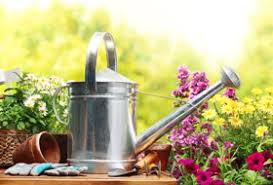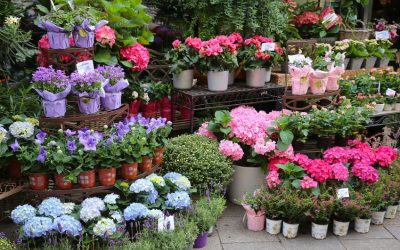Growing a garden at home is an activity that the entire family can participate in, and it provides a household with a wealth of benefits.
These include a healthy amount of outdoor exercise and a greater understanding of horticulture, and gardening is also a good method to improve mental health and fight stress. Fruit and vegetable gardens offer even more benefits, including increased access to foods that are fresher, healthier, and, in the case of organic gardening, exposed to fewer pesticides. Producing food in a home garden also leads to an increased level of self-sufficiency and lower food costs. People can participate in community gardens that spread these benefits to many households at once, and even apartment residents can make gardens to grow their own food. Of course, coaxing food from the soil requires some amount of trial and error to master, but there are techniques and strategies that people can learn in order to get the most out of their garden.
A Plant’s Basic Needs
Before starting a garden, it is necessary to understand what plants require in order to survive and grow. Different species of plants can have unique needs, but some traits of a hospitable growing environment are the same for the vast majority of cases. Because plants use photosynthesis to gather energy, they require exposure to sunlight as well as water and soil. Plants also need chemical nutrients such as potassium, nitrogen, and phosphorous, and the soil must have a proper pH level. Before trying to plant, it is advised to test the soil for its pH as well as for contaminants such as lead or other toxic metals. If the nutrient level in the soil is low, it may be necessary to add fertilizer or compost. Plants will also need varying amounts of soil and space in order to grow properly.
Climate Tolerance
When setting up a garden, it will be necessary to know the area’s climate and the plant hardiness zone that it is in. The hardiness zone is an area that is defined by the coldest temperatures in the region. Plants that can survive in the lowest temperatures in the area are best suited to grow there. It is also necessary to know the length of the growing season in a given region, as this will help with deciding when and what to plant so that the plants have time to mature and become ready for harvest.
Choosing a Location
Gardening is typically an outdoor activity done in one’s yard or in a public plot at a community garden. It’s also possible to grow a garden in a windowsill or on a balcony. While an individual plant’s needs will vary, a garden can be made anywhere that one can place a proper-sized container of soil. The right place to grow plants will depend on its access to sunlight, nutrients, soil, and water. Containers for growing plants can take any form, from flower pots to more creative spots that have been properly prepared, such as the inside of an old school desk, a cistern, a watering can, a lunch box, a wooden drawer, or a bathtub. Containers tend to run out of moisture faster than traditional garden beds, but they also take less time to water.
Important Decisions
Before getting started, it’s important to determine the nature, design, and placement of the garden. For instance, think about what plants will be fun to grow or pleasant to look at. It is also crucial to think about how much time a person is willing to dedicate to gardening. The amount of space and sunlight available are also important to consider. When growing a fruit or vegetable garden, one may need to research which crops are capable of growing indoors or in outdoor containers.
Irrigation
Plants require water to survive. They should be watered slowly using a soaker hose or a watering can, and the amount of water needed will depend on factors such as the species of plant, the climate, and the type of soil. Areas that are damp and cool, for example, require less water than plants in areas that are hot and dry. Soil texture also plays a role in how frequently a plant should be watered. Fine soil holds more water and can be watered less frequently; coarser soil requires more frequent watering with smaller quantities of water. Whether the soil is fine or coarse, the total amount of water should be at least one inch a week. To determine whether plants need watering, stick a finger into the soil to feel how dry it is.
Necessary Equipment
Every gardener requires the right tools to plant and tend to their garden. Common tools that can be used for small container gardens, medium-sized bed gardens, or larger gardens include gloves, spades, pruners, shears, hand trowels, and a watering can. For garden beds, one may consider adding a digging fork, a shovel, and a hoe. A rake, dutch hoe, garden hose, wheelbarrow, loppers for thick branches, and edgers for clean lines around the edges of the garden can be added for use in larger areas.
Purchase and Plant
Once a person understands what’s needed to successfully start a garden, it’s time to purchase plants and get started. There are a number of ways to go about this. One option is to start growing plants from seeds, but one can also buy seedlings or young plants. One can start their garden more quickly with young plants, but this is a more expensive option. Seedlings are quick to start but require more time and attention than young plants. They must be handled carefully and potted and watered as soon as possible, and they are a good option for people with limited space. Seeds are the least expensive option, but they take time to raise, require daily care, and often must be sown indoors. While it’s cheaper to buy seeds, there tend to be more equipment costs, such as containers and trays, a seed-starting mix, and grow lights in some cases.
Planting directions vary according to the plant type and whether it is a plant or seed. When starting seeds, refer to the packet for specific instructions. In general, the process begins by planting them in loose soil. Depending on the plant, they may need to be buried or simply sprinkled on the surface of the soil and gently pressed down. With plants, dig a hole that’s roughly the same depth as the pot the plant or seedling is being removed from and twice as wide. The extra width is important to allow the roots to spread and grow. Place the plant’s roots and the attached soil into the hole gently, cover the roots with the dirt, and carefully pat it firm. With both seeds and plants, water them and provide sufficient light.
Control Pests
Once planted, a garden is susceptible to problems such as pests, disease, and weeds, but these common issues can often be treated or prevented altogether. Weeds can typically be managed by pulling them out or reducing their growth by covering the soil with mulch. Pests and diseases can be kept at bay by removing any unhealthy plants, using compost, and clearing debris that may harbor destructive insects. Planting pest-resistant plants is another tactic. There are also many do-it-yourself natural pesticides and organic solutions that can be used. Physical barriers are also a way to keep both bugs and critters such as dogs or rabbits from one’s garden. These can include row covers, cloches, netting, and even fences.



